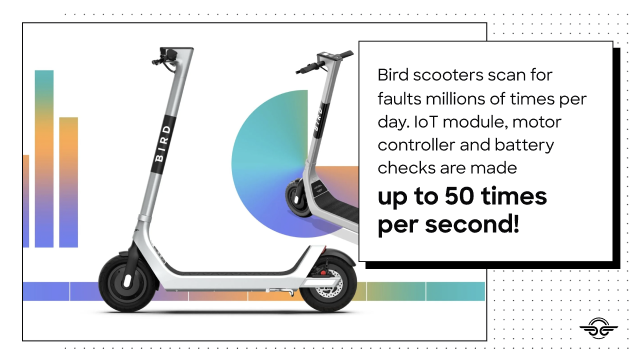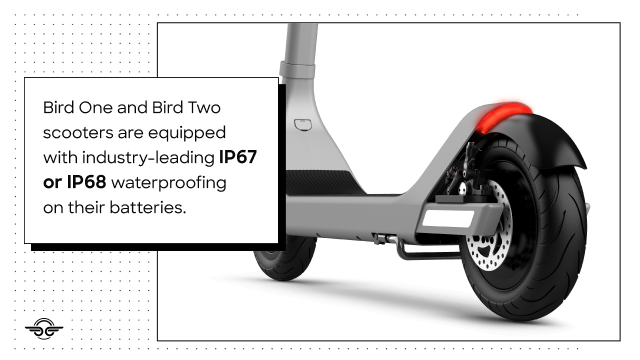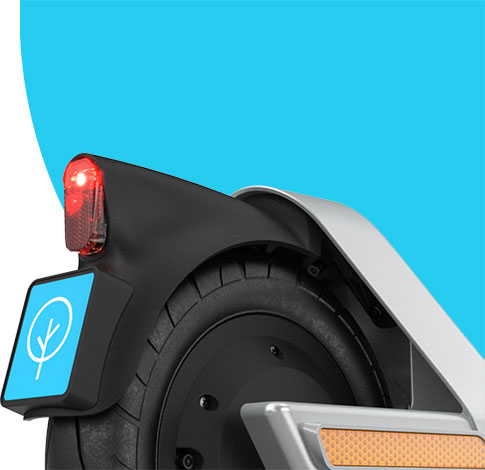When it comes to safety and sustainability in the micromobility industry, nothing is more important than the vehicles themselves.
It’s the reason Bird invests so heavily in research and development, designing custom electric scooters that are built from the ground up to move not only riders but the entire industry forward. Our team of aerospace and automotive engineers is constantly innovating based on the experience and feedback from tens of millions of completed scooter rides globally.
“As the pioneers and most experienced operators of the micromobility industry, we have a tremendous amount of experience with vehicles in this class,” said Scott Rushforth, Chief Vehicle Officer at Bird. “We’ve always felt that it’s our responsibility to use that knowledge to design the most advanced, highest quality vehicles in the world; vehicles that simultaneously serve the complex needs of our riders, our city partners and our planet.”
After analyzing the myriad unique details and considerations that go into the design of every Bird scooter, Scott and his team have highlighted three points critical to building the world’s most advanced shared electric scooters.
1.) State-of-the-Art Vehicle Diagnostics
Maintaining a healthy fleet of vehicles composed of complex hardware and software takes state-of-the-art diagnostics. It’s not enough to simply know if a scooter is standing upright or whether its tail lights are functioning properly (although these things are important). The best fault detection systems are designed to proactively identify and prevent possible issues before they turn into problems.
To that end, every individual Bird One and Bird Two scooter checks for faults millions of times per day. Yes, millions. Brain fault (or IoT module), motor controller and battery checks are made as many as 50 times per second. These kinds of advanced diagnostics are possible thanks to a customizable series of up to 200 sensory inputs per scooter that measure everything from abnormal battery temperatures to a sticky brake. As the inputs are configured in near-innumerable ways, our scooters act like a network of connected supercomputers, compiling diagnostic data, learning and improving operations every day.

With this wealth of information, Bird scooters are able make automatic adjustments that improve vehicle safety, performance and sustainability. This includes regulating the available power to the motor in real time in order to prevent overheating and extend the life of all component parts. We can also use our backend servers and system analytics to detect and interpret patterns in the data, allowing us to predict faults and schedule preventative maintenance.
2.) Industry-Leading Battery Technology
Scooter batteries have a relatively high carbon footprint, so it’s imperative that they be built to last. That’s the reason we equipped our Bird One and Bird Two scooter models with industry-leading IP67 or IP68 waterproofing on their batteries. This means that not only are they resistant to the dust that’s so prevalent on city streets, but they’re also able to be completely submerged in up to 1 meter of water for 30 minutes (IP67), and even greater depth/time for IP68.
*By way of a quick review, the IP Code is a classification system published by the International Electrotechnical Commission used to rate the degree of protection provided by mechanical casings and electrical enclosures.
As an added measure of protection, Bird batteries are also securely attached to the chassis of the scooter and equipped with sensors to detect unauthorized movement. This enables us to safely disable the vehicle and battery when necessary to deter theft and vandalism.

With each new generation of vehicles, our batteries are becoming safer, longer lasting and more sustainable. This is perhaps most visible in our Bird Two, whose batteries have a lifespan of 14,000 miles thanks in large part to an advanced EV powertrain that uses just 27 watt-hours per mile. For comparison, many of the best-selling electric car models use more than 10x that amount of energy.
3.) Best-in-Class Durability
Vehicle durability is critical to the micromobility industry from both an environmental and an operational perspective. Scooters that last longer enable our local teams to manage and maintain consistent fleet sizes with fewer vehicles. They also allow more time for the carbon emissions associated with the manufacturing process to be offset.
Our Bird One scooters use a steel-reinforced aluminum frame and a fixed neck to ensure stability and longevity on all types of street surfaces. Similar to our Bird Twos, there is no exposed cabling which helps to protect both riders and sensitive component parts. They’re also equipped with custom, semi-solid tubeless wheels allowing for both a smoother ride and reduced vehicle vibrations over rough surfaces.
Our Bird Twos have been designed and verified by an external lab to withstand 60,000 curbside impacts. Other features including automotive-grade connectors and custom, self-sealing pneumatic tires ensure that these scooters are able to hold up to the widest possible range of weather and roadway conditions.
Learn More
To learn more about Bird’s vehicle advantage and stay up to date on upcoming product and market launches, subscribe to our Bird Cities Blog.

